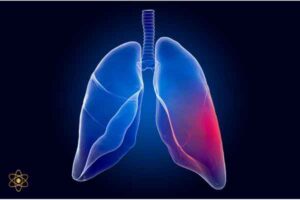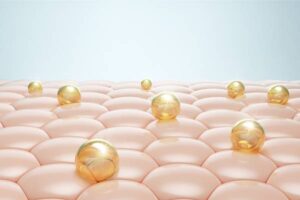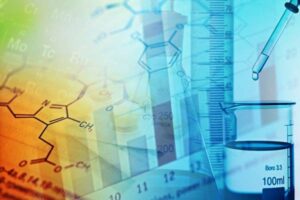
The Benefits Of Thymosin Alpha-1 In Treating Cystic Fibrosis
Thymosin Alpha-1 and Cystic Fibrosis (CF) are at the forefront of groundbreaking medical research. Recent studies have shown that thymosin
Erectile dysfunction (ED), often referred to as impotence, is the persistent inability to achieve or maintain an erection sufficient for satisfactory sexual performance. It’s an issue that affects a significant proportion of men, especially as they age. Understanding ED is crucial, not just for those who are directly impacted, but also for partners, health professionals and society as a whole.
This complex condition is often a symptom of underlying health problems such as heart disease and diabetes, and can also be a side effect of certain medications. It can lead to psychological stress, impact self-confidence and contribute to relationship problems. Hence, a clear understanding of ED is the first step in the journey towards effective treatment.
This guide will explore the role of Hormone Replacement Therapy (HRT) and PT-141 Bremelanotide in the treatment of erectile dysfunction, offering insights into their benefits and application. Explore PT-141 peptide from Direct Peptides.
Hormone Replacement Therapy (HRT) is a medical intervention often used to alleviate symptoms associated with hormonal imbalance. This therapy is particularly beneficial in men experiencing lower than normal testosterone levels, which is one of the potential physical causes of Erectile Dysfunction (ED).
The primary role of HRT in treating ED is to restore testosterone levels to a healthy range. Testosterone is a hormone that plays a crucial role in male sexual function, including the production of nitric oxide, a molecule needed for erectile function. By supplementing testosterone, HRT may improve ED symptoms in men with low testosterone levels. This can lead to enhanced sexual performance, boosting self-confidence and positively affecting relationships.
However, it’s necessary to note that while HRT can offer several benefits, it also comes with potential risks and side effects. These may include acne, sleep apnea, and an increased risk of certain cardiovascular conditions, especially in men with existing heart problems. Additionally, men receiving HRT may experience mood swings, weight gain, and a decrease in testicle size. Therefore, it’s essential to discuss these potential risks with a healthcare provider before deciding on any course of treatment. It’s also important to remember that HRT is not a cure-all solution and should be part of a comprehensive treatment plan for ED that includes lifestyle changes and mental health support.
PT-141 Bremelanotide is an innovative treatment option for erectile dysfunction. Unlike traditional ED medications that work by dilating blood vessels, PT-141 acts on the nervous system. It is a synthetic peptide that is used to stimulate the melanocortin receptors in the brain, which plays a crucial role in sexual arousal and function.
PT-141 works by enhancing sexual arousal signals in the brain, thus leading to an erection. It does not require sexual stimulation to work and can produce spontaneous erections. This makes it a unique and effective treatment option for men with ED, particularly those who have not responded to other treatments.
One of the key advantages of PT-141 is its ability to treat ED without the need for direct sexual stimulation, offering a new mechanism of action that may benefit men who have not responded to conventional ED treatments. Moreover, it can be used by men of all ages and does not interact with food or alcohol.
However, like all medications, PT-141 has some potential drawbacks. Side effects may include nausea, flushing, and headaches. Additionally, it is currently only available as a subcutaneous injection, which may not be preferable for all patients. Lastly, longer-term effects of the drug are still under investigation, so it is important to discuss any concerns with a healthcare provider before starting treatment with PT-141.
Both Hormone Replacement Therapy (HRT) and PT-141 Bremelanotide have proven effective in treating erectile dysfunction, albeit through different mechanisms. HRT, specifically testosterone replacement, directly addresses hormonal imbalances which can lead to ED. It is particularly effective for men with low testosterone levels, and can significantly improve erectile function and overall sexual performance. On the other hand, PT141 acts on the nervous system to stimulate the melanocortin receptors in the brain, thereby enhancing sexual arousal. This unique mechanism makes PT 141 effective even for men for whom traditional ED treatments have not worked.
When it comes to suitability, the decision between HRT and PT-141 will largely depend on the individual patient’s condition and preferences. HRT may be more suitable for men who have low testosterone levels as the primary cause of their ED. It may also be a good option for those who are comfortable with the potential side effects and risks associated with hormone replacement. In contrast, PT-141 could be an excellent choice for patients who prefer a treatment that does not require direct sexual stimulation and want to avoid the potential side effects of traditional ED medications. Additionally, it may be a suitable option for men with ED caused by psychological factors rather than physical ones.
Erectile dysfunction is a common condition that affects many men across varying age groups. Treatments such as Hormone Replacement Therapy (HRT) and PT-141 Bremelanotide offer promising solutions to address the underlying causes of ED. However, the effectiveness of these treatments hinges on their correct use and individual patient conditions. Therefore, it is paramount to consult with a healthcare provider before initiating any form of treatment. A medical professional can provide valuable guidance, taking into consideration individual health profiles, the potential risks, and the benefits of each treatment option.
Furthermore, it is important to continue fostering a culture of research and awareness about ED. Despite its prevalence, ED remains a stigmatised condition that many find difficult to discuss openly. By encouraging further research into ED and its treatments, and fostering a broader societal understanding, we can help to break down these barriers, enabling more individuals to access the help they need and live fulfilling lives.
[1] https://www.ncbi.nlm.nih.gov/ pmc/articles/PMC2701485/
[2] https://pubmed.ncbi.nlm.nih.gov/14963471/
[3] https://pubmed.ncbi.nlm.nih.gov/14999221/
ALL CONTENT AND PRODUCT INFORMATION AVAILABLE ON THIS WEBSITE IS FOR EDUCATIONAL PURPOSES ONLY.
DISCLAIMER: These products are intended solely as a research chemical only. This classification allows for their use only for research development and laboratory studies. The information available on our Direct Peptides website: https://direct-peptides.com is provided for educational purposes only. These products are not for human or animal use or consumption in any manner. Handling of these products should be limited to suitably qualified professionals. They are not to be classified as a drug, food, cosmetic, or medicinal product and must not be mislabelled or used as such.

Thymosin Alpha-1 and Cystic Fibrosis (CF) are at the forefront of groundbreaking medical research. Recent studies have shown that thymosin

Exploring the Potential Benefits of Tesofensine Capsules Continued research into the potential benefits of Tesofensine could lead to groundbreaking advancements

GHK-Cu Capsules: Copper Peptides For Skin In an ever-evolving world of beauty standards, the quest for vibrant, healthy skin remains

Explore the anti-aging effects of Epithalon And Thymalin Stack The pursuit of longevity and delaying the signs of aging is

401 N. Mills Ave, Ste B, Orlando, FL 32803, United States
